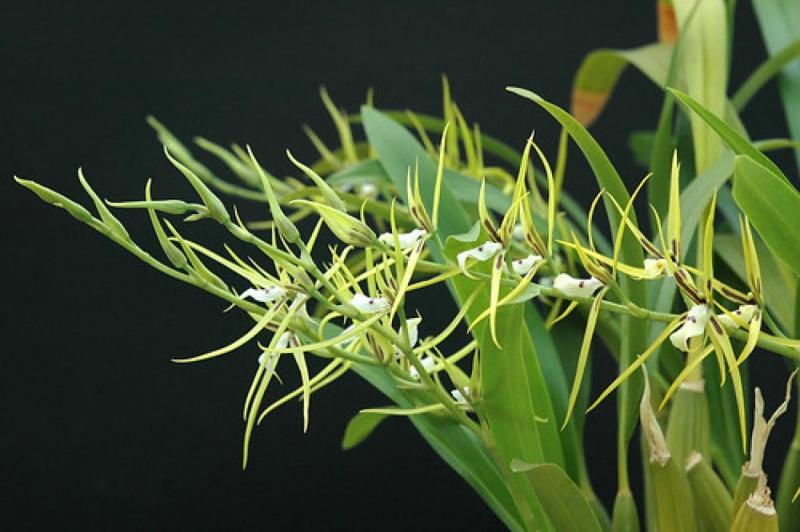Brassia signata
Also known as: The Marked Brassia or Brassia mexicana Oncidium signatum in the subfamily: Epidendroideae
Native to: Peru
General Information
The Marked Brassia is a sympodial cool to warm growing epiphytic or terrestrial orchid belonging to the sub family Epidendroideae native to Peru.
Plant Description
Sympodial. Grows to 30-43cm. Each new growth has numerous erect lance shaped, oblong shaped leaves that grow to 3.5-30cm long. Pseudobulbs grow to 4-12.7cm
Care Notes
These orchids have a fine root system that can quickly die back if left dry for too long, but also does not like to be kept wet, so water regularly but ensure that the mix is dry before watering.
Climate
Grows at high elevations. Rainfall ranges from 15mm to 173mm per day, heaviest in August and lightest in February. Temperature ranges from 11C to 23C, highest in March (14C to 23C) and lowest in January (11C to 21C).
Watering
These orchids prefer a wet-dry cycle between waterings, they should be watered frequently but only when the moisture is approaching dryness, where the pot feels light and/or the media looks dry. Keep an eye on mounted orchids in warm weather as they may dehydrate quickly.
Potting
These plants can be sensitive to repotting though should not require repotting regularly. Repotting should be done when the mix has broken down to the point that it doesn't absorb water or holds onto water for far too long, usually the plant shows a decline in growth as well.
The mix should be free draining, with a blend of 30% inorganic ingredients such as coarse sand, gravel or perlite, mixed in with about 70% organic ingredients such as peat, leaf litter or decomposed bark. Avoid commercial potting mixes as they can vary wildly and may contain "wetting agents" that can hold onto water for loo long, causing rotting and stunted growth.






